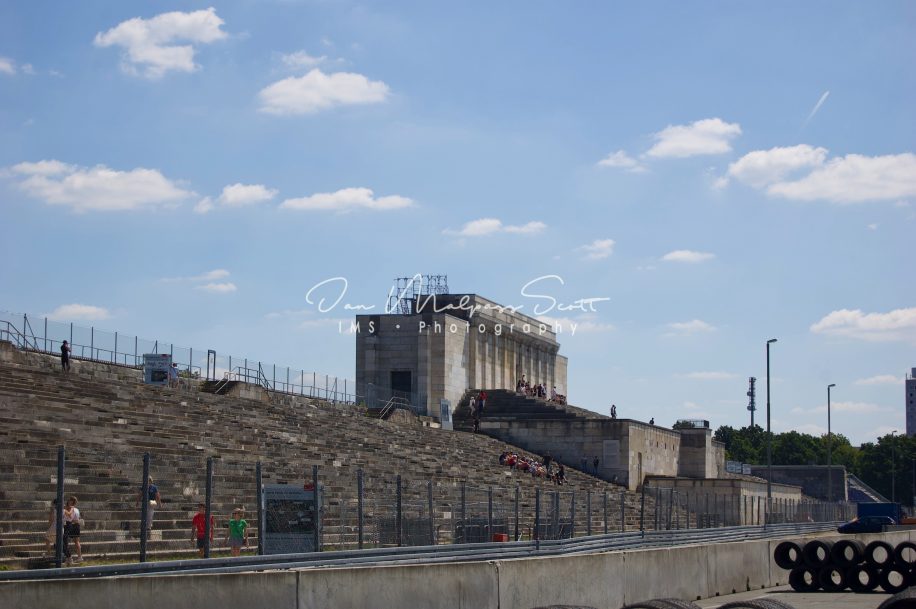![]()
Tribune of the Zeppelinfeld, Nazi party rally grounds, Nuremberg, Germany.
The Nazi party rally grounds (German: Reichsparteitagsgelände, literally: Reich Party Congress Grounds) covered about 11 square kilometres in the southeast of Nuremberg, Germany. Six Nazi party rallies were held there between 1933 and 1938.
The Zeppelinfeld (in English: Zeppelin Field) is located east of the Great Road. It consists of a large grandstand (Zeppelinhaupttribüne) with a width of 360 metres (390 yards) and a smaller stand. It was one of Albert Speer’s first works for the Nazi party and was based upon the Pergamon Altar. Its square piers are inspired by the work of Franco-American architect Paul Philippe Cret. The grandstand is famous as the building that had the swastika blown from atop it in 1945, after Germany’s fall in World War II. The name “Zeppelinfeld” or “Zeppelinwiese” refers to the fact that in August 1909 Ferdinand Graf von Zeppelin landed with one of his airships (LZ6) in this location.
From 1947 to 1995 the Nurnberg American High School, a DoDDS facility, used the field (called ‘Soldiers Field’) for high school football and American football practice. In 1967 the city authorities blew up the grandstand’s double row of pillars, causing severe damage to the rest of the building. The remainder of the stand is intact and used as the centerpiece of the Norisring motor racing track. The German leg of the traveling heavy metal festival Monsters of Rock was held here twice during the 1980s. The field has also been used, and is still being used today, by the Nuremberg Rams American Football team. Another part of the grounds is home to a campground. After years of neglect the damage due to erosion and dampness was severe, made worse by the poor quality of the initial construction. In 2019 an 85 million euros plan to conserve what remained of the stadium and make it accessible to visitors was announced, with a target completion date of 2025.


